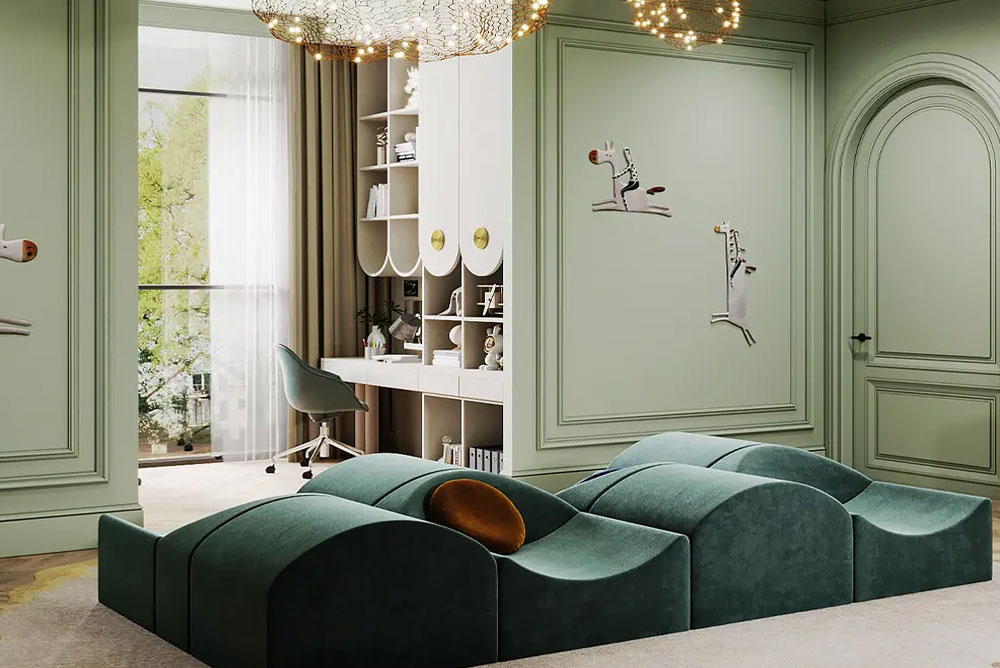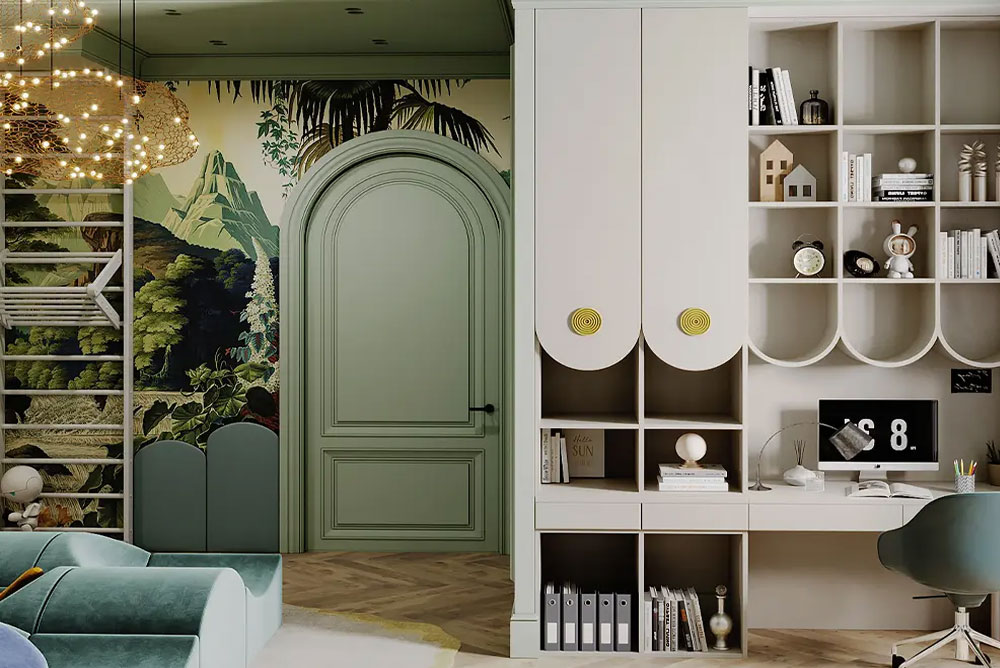The Sensory Palate: Designing with Sight, Sound, Scent, and Touch in Mind
Today, architects are more focused on designing environments that improve the lives of those who live within them.
Just imagine a room that feels alive, where the play of light, the softness of materials, and the gentle hum of sound all come together to give you a unique experience.
This is the power of sensory architecture, which strongly affects the human senses.
This architectural concept aims to build a strong physical and emotional connection between people and space, while detaching from the noisy outside world.
In sensory architecture, every architectural detail is strategically incorporated to give you a sense of comfort, peace, and relaxation. In this article, you’ll explore the essence of sensory architecture in detail and explain how effectively it shapes your mood and emotions.
What is Sensory Architecture?
Unlike other architectural concepts, this one is a multisensory architecture that simultaneously stimulates and engages multiple senses.
It is a human-centric approach that goes beyond how a place looks to include how it feels, sounds, and smells, which gives more memorable and meaningful experiences.
Why does Sensory Design in Architecture Matter?
Sensory design is not just a concept, but it invites your senses to participate in enjoying an emotional connection to the space.
But why has it become a necessity in today’s busy, noisy world? The answer lies in the benefits outlined below:
Built Emotional Connection
With light, texture, scent, and sound, sensory interior design awakens emotion, which helps individuals to connect deeply with their surroundings while feeling comforted, inspired, and understood.
Comprehensive User Experience
Sensory architecture engages every sense, transforming the way people experience and relate to a space. The sensory spaces give you an inviting feel, which lets you explore and connect with your mood and spirit.
Improve Cognitive Function
Thoughtful integration of sensory elements improves cognitive functionality. It helps to regulate circadian rhythm, increase concentration, reduce stress, trigger memories and emotions, which encourages a deeper connection with the surrounding environment.
Encourage Social Interaction
Sensory interior designs create a comfortable, engaging, and emotionally supportive environment that increases social interaction. It sparks curiosity that allows conversation, collaboration, and exploration, which keep the people connected.
Improve Mental Well-Being
Sensory design promotes overall well-being by reducing stress levels, improving mood and promoting relaxation. It helps to align body and mind through thoughtful acoustics, natural materials, soft lighting, and harmonious spatial flow.

How Sensory Architecture Stimulates Your Senses?
The beauty of sensory interior design is that every design detail reflects how people emotionally, cognitively, and physically interact with their surroundings.
Here you’ll discover how every sense plays an individual role in evoking different emotions:
Sight: Experience the First Impression
Sight is a primary sense that shapes our initial interaction with any space. In sensory interior design, it plays a crucial role in creating visually calming and supportive environments with the use of colors, patterns, and lighting.
Here’s how it influences your experience:
- Color Psychology: Color palette helps to develop different emotions, like red or orange hues give an energetic vibe, and green/blue hues reflect tranquility, while soft tones promote calmness.
- Layered Lighting: The strategic integration of layered lighting, like ambient chandeliers, accent lighting, and task lights, adds glamour to the space, which improves mood.
- Layouts and Textures: Specific layouts and textures of materials like natural wood, stone, and marble create a visually intimate connection to the space.
Scent: Aromas that Awaken Emotion
Have you ever experienced that some scents bring you back to memories and let you connect with a special moment? That’s what aroma does in sensory architecture, in which architects use different scents that influence the space atmosphere as well as human emotional well-being.
Take a look at how scent is used in this architecture:
- Purposeful Aromatic Design: Lavender and sandalwood fragrances promote relaxation. While peppermint or citrus aromas can enhance concentration and productivity.
- Essential Oil Diffusers/Scented Candles: These elements are strategically placed to subtly infuse spaces with carefully selected aromas which develop specific moods.
- Natural Elements: Flowering plants such as rose, jasmine, and cedarwood panels bring natural aromas and beauty to the space, which enhance the sensory experience.
Sound: Spaces that Can Sing
Sound is an invisible element, but it highly impact on the human brain. It can act as both an intentional stimulus and a subtle presence, which influences our emotions and shapes the way we experience a space.
Let’s see how sound is incorporated in sensory interior design.
- Acoustic Integration: Installation of acoustic panels, especially in hospitals, libraries, and meditation rooms, to control sound pollution and unwanted noises.
- Smart Audio Systems: Integrated speakers that play soft music in working areas, spas, and restaurants to stimulate energy and excitement.
- Natural Sounds: Adding water features like fountains and waterfalls is just like bringing nature inside, which gives a soothing and relaxing sound of water.
Touch: The Power of Texture
The human sense of touch plays a crucial role in sensory architecture. Architects select materials based on their texture, temperature, and tactile qualities to create a physical interaction between people and surroundings.
- Selection of Fabrics: Use of high-quality fabrics like velvet, leather, and silk for sofas, armchairs, and cushions can give a sense of coziness and warmth.
- Natural Materials: Natural materials such as wood, marble, timber, clay, or stone create rich tactile experiences that evoke emotions.
- Contrast Textures: The introduction of contrast textures can add depth and character to the space. e.g., A soft, comfy sofa with a rough stone wall.

Heal by Engaging Your Senses to Space
Everyone wants to live and work in an environment that makes us feel better about ourselves and brings a sense of individuality.
The sensory architecture makes it possible by truly changing the concept of designing by thoughtfully integrating colors, lighting, sounds, and scents. It creates spaces that not just soothe the eyes but also touch people’s emotions and overall well-being.
This design approach works as a bridge between the physical spaces we occupy and the deep emotional experiences they have the power to evoke.
So want to add sensory designs to your project? Then get in touch with EMKAAN. We proudly stand at the top in the competitive market for our high-end interior design services. We’ll help you experience the power of sensory design by creating a multi-sensory environment for you.
FAQs
What is sensory design in interior design?
It’s a human-centered approach that engages all senses to create meaningful, emotionally connected interior spaces.
How to design a sensory space?
It combines light, color, texture, scent, and sound thoughtfully to evoke comfort, focus, and emotional balance for residents.
How do sensory designs stimulate are emotions?
It activates our senses, which triggers memories and feelings, shaping mood, perception, and emotional connection with spaces.
What is tactile experience in sensory architecture?
It’s the physical interaction with materials and textures that influences comfort, awareness, and emotional responses to a space.
Why is sensory architecture important?
It enhances well-being by creating spaces that connect with people emotionally, reduce stress, and improve daily living experiences.



